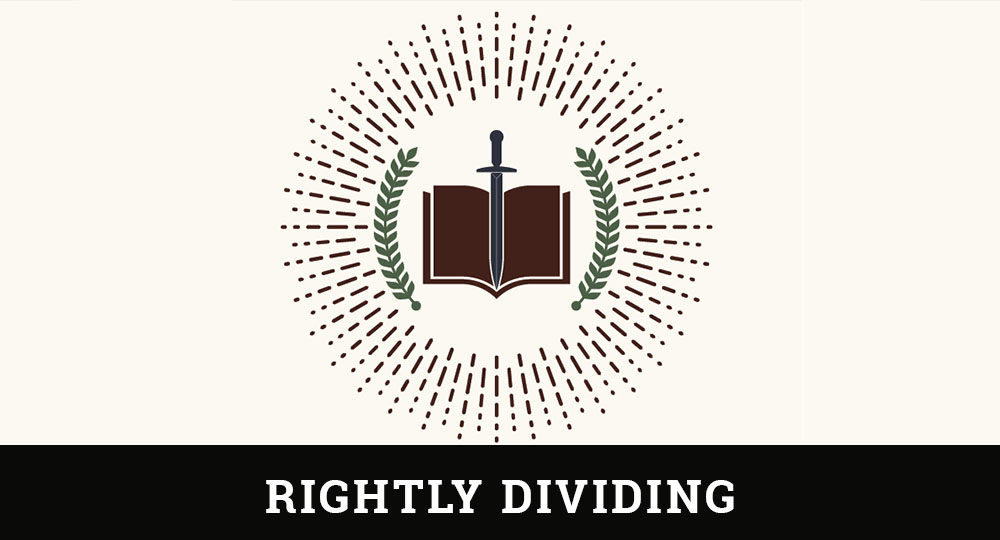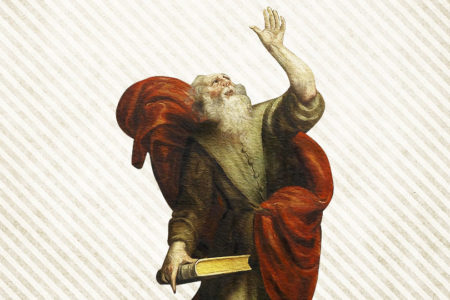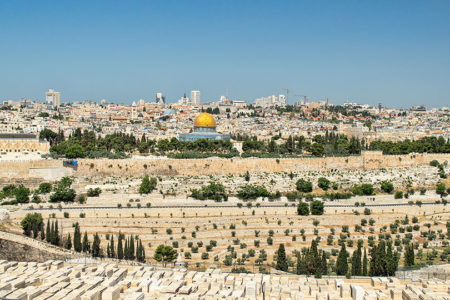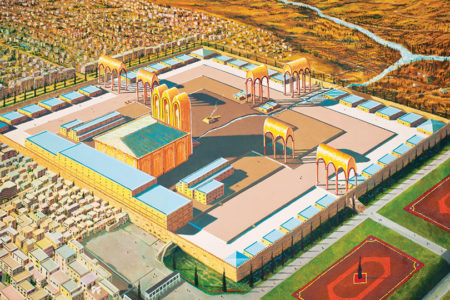God’s Throne Revealed Revelation 4:1–11
Questions about heaven are always at the center of a believer’s thinking, especially questions dealing with the appearance of and activities in heaven. Through the eyes of John, believers are permitted a gaze on the awe-inspiring spiritual realities surrounding God and His throne. In the portion of Revelation examined in this article, the apostle tried to put into words the indescribable glory he saw in heaven.
A brief review is necessary to understand the setting of chapter 4. In chapter 1, John received a vision of the glorified Christ, called “the things which thou hast seen” (1:19). In chapters 2 and 3, Christ revealed His final message to the church on Earth, called “the things which are” (1:19). Beginning with chapter 4, John received a second vision unveiling future events that make up the third division of this book (ch. 4—22), appropriately identified as “the things which shall be hereafter” (1:19). The words “After this” (4:1), meaning after these things, indicate that this is a new division in Revelation. The second mention of “things which must be hereafter” (v. 1) differs in function from the first. It places the fulfillment of prophecies mentioned in chapters 4–22 after the Church Age. This interpretation is supported by the following reasons:
- The word church is not used in this section (ch. 4—18) about the Tribulation period.
- There is no indication that the events mentioned during the Tribulation have any literal fulfillment in the Church Age.
- There is evidence in this section that the church is already in heaven when the Tribulation prophecies are being fulfilled.
Christ promised that the church would be kept from going into or through any portion of the Tribulation that is to come upon the entire earth (3:10). Therefore, it is reasonable to conclude that the church has been removed from the earth before the events that “must be hereafter” occur.
Summoned To Heaven
John said, “I looked and, behold, a door was opened in heaven; and the first voice that I heard was, as it were, of a trumpet talking with me; which said, Come up here” (v. 1). The word behold draws the reader’s attention to a specific door that was opened in heaven to provide access for John. The voice is that of Christ (cp. 1:8, 10–11), who summoned John before God’s throne. “Immediately” the apostle “was in the Spirit” (v. 2) and saw a throne set in heaven. Was John caught up bodily, or only in his spirit? Most likely the Holy Spirit took possession of John’s senses. He was caught up into heaven and could hear and see what was happening before God’s throne, although he was physically on the earth.
Scene In Heaven
Instantly John saw “a throne … set in heaven” (v. 2). Central to everything happening in chapters 4 and 5 is God’s throne. What the apostle saw is organized around four prepositional phrases: “on the throne” (v. 2); “round about the throne” (vv. 3–4); “out of the throne” (v. 5); and “before the throne” (v. 6). John, speaking in symbolic language, provided a sevenfold description of God’s throne and the activities surrounding it.
First, John saw the sovereign God of the universe sitting “on the throne” (v. 2). This must be God the Father, for Christ took the scroll (5:7) from the right hand (5:1) of the one seated on the throne. Notice that John gave no anthropomorphic description of the one sitting on the throne. He could not do so because God the Father is Spirit and does not possess a body as we know it. John saw no form because no one has seen God at any time (Jn. 1:18; cf. Ex. 33:20). He simply reported, “he that sat was to look upon like a jasper and a sardius stone” (v. 3). The jasper stone is similar to a brilliant diamond. The sardius stone is similar to a blood-red carnelian. John saw a sparkling light like that of a blue-white diamond mingled with the bright light from a blood-red stone like a ruby, producing a flashing blaze of glorious color.
Second, surrounding the throne was “a rainbow” that looked “like an emerald” (v. 3), not a multicolored bow, as we see today. The rainbow symbolizes God’s mercy, grace, and covenant promises in the midst of divine judgment (cp. Gen. 9:13).
Third, John saw a “sea of glass like crystal” (v. 6) before the throne. The sea of glass functioned as a mirror, reflecting the many brilliant colors flashing from God’s throne. No meaning is given for the sea of glass. Some commentators have tied its symbolic meaning to the laver in the Tabernacle and Temple, but such typology seems fanciful. Others teach that it symbolizes peace in heaven compared with turbulence on the earth—again, highly doubtful. Most likely the sea of glass, reflecting the glory and majesty of God, is symbolic of His purity, holiness, and separation from creation.
Fourth, John heard and saw, proceeding from God’s throne, “lightnings and thunderclaps, and voices” (v. 5). These are symbolic of the awesomeness of God’s presence and divine power (cp. Ex. 19:16). Throughout Revelation, these sights and sounds signal the rising storm of God’s wrathful judgment to be poured out on a sinful world (8:5; 11:19; 16:18).
Fifth, John saw “seven lamps of fire burning before the throne, which are the seven spirits of God” (v. 5). These were not the lamp stand already mentioned (1:12, 20), but torches blazing perpetually before the throne of God, representing the Holy Spirit in His fullness and perfection. Although the Holy Spirit has no physical form, He was often manifested in various forms throughout the New Testament. At Jesus’ baptism, He descended upon Him like a dove (Mt. 3:16); at Pentecost, He appeared as cloven tongues of fire (Acts 2:3) sitting on each one in the upper room. Here the Spirit is symbolized by blazing torches of fire, representing God’s wrath and judgment ready to be poured out on the ungodly.
Sixth, John saw “four and twenty elders sitting” around the throne, “clothed in white raiment; and they had on their heads crowns of gold” (v. 4). Scholars differ on whether these elders are angels, church saints, or representatives of Israel and the church. Many believe the elders are angels, based on a variant reading of the Greek text in Revelation 5:9–10. To say that a portion of the elders represent Israel does not seem to be a correct interpretation. The elders are pictured in their glorified bodies before God’s throne during the Great Tribulation on the earth. Scripture teaches that the redeemed in Israel will be resurrected after the Great Tribulation (Dan. 12:12–13), just before Christ’s return to the earth. The following clues within the text seem to indicate that the 24 elders represent the church: There is no mention of the church on the earth during the Tribulation. The term elder is used frequently throughout the New Testament for leaders in the church. The elders are clothed in “white raiment” (v. 4), the garments worn by church saints in heaven (19:8). They are wearing “crowns [Gr., stephanos] of gold” (v. 4), a victor’s crown, symbolic of honor and reward. The crowns and the white raiment give evidence that the elders have already been judged and rewarded by Christ. This is not applicable to angels or Old Testament believers. There is a distinction made between the angels, Tribulation saints Jew and Gentile), and the elders in Revelation 7:11, 14. The elders are pictured in heaven while the Great Tribulation is taking place on the earth (7:13–14). David divided the Levitical priesthood into 24 courses (1 Chr. 24) to represent the complete priesthood. In like manner, the 24 elders stand for the completed church, which is identified in Scripture as “a royal priesthood” (1 Pet. 2:9).
Seventh, John saw “in the midst of the throne, and round about the throne … four living creatures [beings]” (v. 6). They looked like a lion, a calf, a man, and a flying eagle. Each was full of eyes in front, behind, and within, and each had six wings. They continued day and night, without rest, to praise God (vv. 6–8). These living creatures are mentioned several times in Revelation (4:9; 5:8, 11, 14; 6:1).
Scholars are divided on who and what the living creatures represent. Some see them as angels. Others believe they may represent the attributes of God: majesty, strength, intelligence, and divine vigilance regarding speed. Still others see them as reflecting four aspects of Christ’s ministry in the Gospels. In addition, some see them as representing Israel during their wilderness wandering. Four of the tribes, whose tents were pitched in order around the Tabernacle, had the same symbols on their banners: Judah, a lion; Ephraim, an ox; Reuben, a man; and Dan, an eagle (Num. 2:2). The most reasonable view is that John saw some type of angelic beings, although they do not seem to be angels (5:11). Such living creatures were seen by Ezekiel (Ezek. 1:5–14), and he called them cherubim (Ezek. 10:14–22).
They are also similar to the seraphim mentioned in Isaiah 6:2–3. Angels vary greatly in appearance. Most likely these living creatures are of some order whose sole function is to give attention to God. They are in a position of watchfulness (nothing is hidden from their sight) to guard God’s throne and are swift (six wings) to execute His will and work. They praise God day and night, honoring His purity, power, and preeminence.
Songs in Heaven
John witnessed two songs being sung by the host of heaven. The first was sung by the “four living creatures,” who acknowledged God’s worthiness. They acknowledged His purity, singing, “Holy, holy, holy” (v. 8). This threefold adoration suggests praise to the true God—Father, Son, and Holy Spirit (cp. Isa. 6:3) whose nature is separate from sin. They acknowledged God’s power by singing “Lord God Almighty” (v. 8). He is the omnipotent sovereign of the universe. They acknowledged His perpetuity: “who was, and is, and is to come” (v. 8). He is the eternal God who stands above time and space, having no beginning or end, no past or future—everything is in the present tense to Him. They gave God perpetual praise, “glory and honor and thanks” (v. 9) for His divine attributes and worthiness.
The second song was sung by the “four and twenty elders” (v. 10), who acknowledged not only God’s worthiness, but also His works in creation. The 24 elders praised God whenever the four living beings praised Him. They were submissive to God as sovereign of the universe; they “fall down before him that is seated on the throne” (v. 10). They worshipped Him in two ways. First, they “cast their crowns before the throne” (v. 10). These crowns typify the rewards given to the overcomers at the Judgment Seat of Christ. Believers will receive various crowns for faithful service during their life on Earth. The elders realized that any merit they had received was not due to their own worthiness, but God’s. They gave testimony to this fact by laying their crowns before God’s throne. Second, they offered Him praise for His work in creation. He alone is worthy “to receive glory and honor and power” (v. 11). God deserves such praise from His creation because it owes its very existence to Him. God alone has “created all things, and for [His] pleasure they are and were created” (v 11), sang the elders.
Let us, along with the host of heaven, humbly bow in adoration and praise to our great God for who He is and what He has done.









Thanks alot for the insights shared here.
Do you have PDF for these teaching?
Dear Saints of the Most High God, Special Christian greetings to you in the Name of our Lord and Savior Redeemer Yahshua who is soon to come. To be honest your website really contains the accurate truth of the Bible nothing but the whole truth. Continue being faithful to Him who called you and sent you for many be called but very few are chosen who are blessed like you. I hope and trust the Almighty God is looking after you very much for the miraculous work you are doing by proclaiming the Everlasting Gospel which is needed in these last days of the Earth’s history and very soon you will be rewarded. God bless you all and May His coming rejoice your hearts.
With lots of Christian love,
ELDER CHABBY ALFRED CHABALA
IN ZAMBIA
in a way if God the Father is seated on the throne in Revelation 4 and then the Lamb which represents Jesus, the son, it should be another reason not to believe in postmillenialism. since the son is not seated on the throne until Revelation 11:15 and then again in Revelation 20:11 .. and i saw a great white throne and Him who sat upon it from whose presence earth and heaven fled away and no place was found for them.
Thank you for your website and we are in need Bibles in our local language only 50 copies and tracts for free distribution to unsaved souls. Ezekiel 33:6-9; Matthew 24:14.
Brother DAVID LEVY, share the Christian greetings to all brethren there.